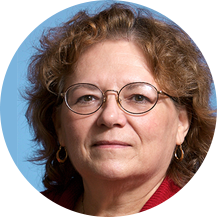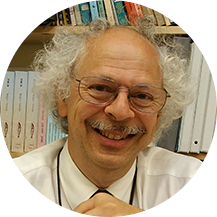How Can We Achieve Computer Science for All?

It’s no secret that computer science is one of the hottest subjects around. More students than ever are leaping at opportunities to learn to code, and employers in all industries need people with the skills to develop the programs and build the machines that run the modern economy.
To support the continued growth of the discipline among all students, EDC is working to expand and enhance K–12 computer science education throughout the United States. With state, federal, foundation, industry, and higher education partners, EDC’s programs are training teachers, strengthening statewide initiatives, and providing evidence of effective programs, policies, and practices.
So, what are we learning about what it will take for all students who are interested in computer science to have the opportunities they deserve? Four EDC experts offer their perspectives.
A brighter future
Computer scientists are defining the boundaries of discovery and innovation in nearly every industry sector. Software is everywhere—in health and medical research, manufacturing, finance, national defense, the STEM fields. The exponentially growing need for computer scientists and computer science-enabled workers in all fields gives us an opportunity to offer our students the tools to create a bright future.
To get more young people into the field, we have to make a better case for developing foundational computer science skills in schools. We have to raise the visibility of the discipline, its impact on creativity and innovation, and the economic opportunities available to individuals with computer science skills. Once students and their families fully understand the career and economic benefits of developing computer science skills, the demand for this type of education will explode.
Giving everyone a chance
There’s widespread agreement that students should learn the basics of programming. One way to achieve this is to let programming be a vehicle for learning—just as word processing has become a natural part of teaching writing. There’s no shortage of ways that programming could be infused into schools’ mathematics and science curricula as early as grade 4.
We also need teachers who are themselves looking for ways to integrate programming and computer science into their instruction. Building this corps of teachers will require more than just a few days of professional development, but it provides a wonderful opportunity for collaboration. If we can bring programmers, computer scientists, and teachers together, we are sure to create innovative materials that give students and teachers real opportunities to be creative in school. Giving everyone that chance is important.
Supporting school districts
School districts have a difficult job—they have to expand their computer science offerings and recruit and train teachers to lead these new courses. Massachusetts is providing a model for how to do this effectively. The Commonwealth’s board of education just approved new K–12 digital literacy and computer science standards, providing some needed guidance for districts.
Massachusetts is also investing in teacher training. For example, the Massachusetts Computing Attainment Network (MassCAN) and EDC will be working closely with the Boston Public Schools to support their development of a five-year K–12 program to implement computer science education at the high school level and hopefully at the K–8 levels also.
Additionally, MassCAN’s partner UMASS Amherst is working with the Springfield and Holyoke school districts on a one-year planning process to design a five-year plan to implement a K–12 computer science education program in those districts. This comprehensive approach to district engagement in computer science education is what will maximize the opportunity to provide all children with access to this emerging 21st-century literacy.
Ensuring equitable access
It’s important for “computer science for all” to become more than just a catch phrase. Is the ultimate goal to ensure that all students have a basic literacy in computational thinking, or is the goal to increase the number of students who go on to higher education and pursue computer science careers? The two are not mutually exclusive, but the end goal should inform the plan and the implementation.
It’s also important to be clear about what the for all means. Implementation of more school-based computer science programs will not automatically mean that students of color, girls, and students with disabilities will participate. Those are the populations we need to focus on. Ensuring these students have equitable access to engaging, exciting computer science experiences takes care and attention and is an issue of utmost importance.



